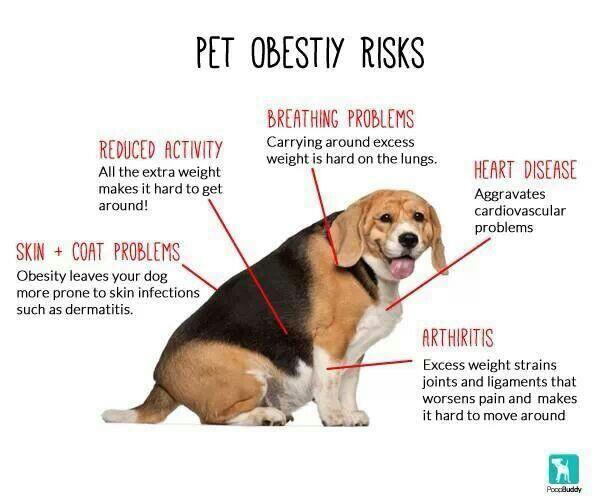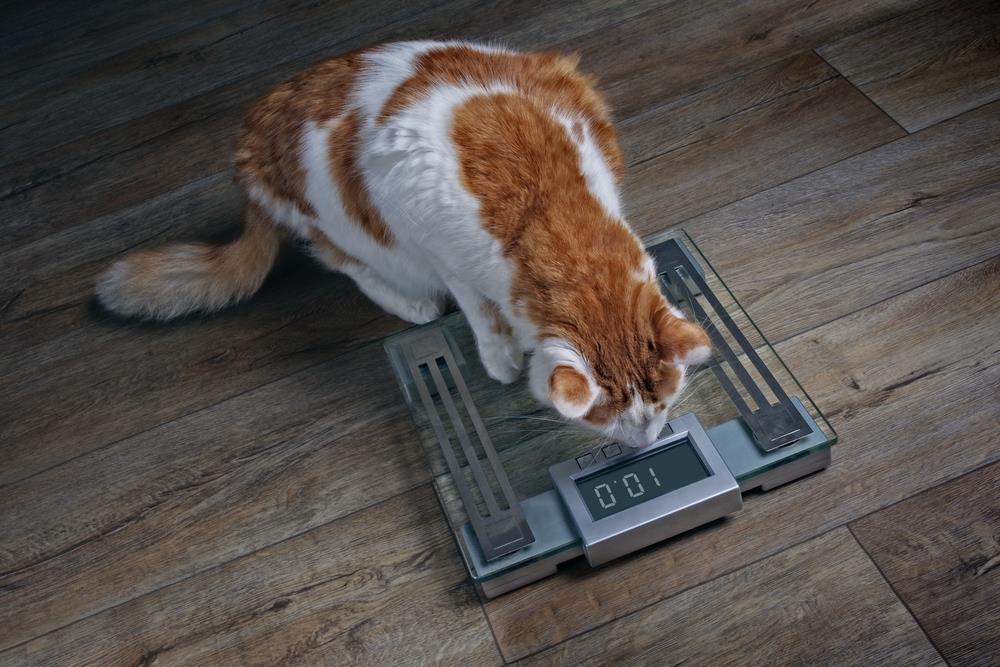Understanding Pet Obesity
Pet obesity is defined as a condition where a pet has accumulated so much body fat that it has the potential to negatively affect their health and lifespan. This issue is becoming increasingly prevalent, with over 40% of dogs and cats in Australia classified as overweight or obese
The Serious Risks of Pet Obesity
The seriousness of pet obesity extends far beyond cosmetic concerns. Overweight pets face a multitude of health risks. These include diabetes, heart disease, and increased risk of certain cancers. Furthermore, obesity can exacerbate joint issues, leading to arthritis and other mobility problems. In severe cases, it can even shorten a pet’s lifespan.
Understanding the implications of pet obesity is the first step towards tackling it. The subsequent sections will delve into practical steps to manage and prevent pet obesity in your beloved pets.

Identifying Obesity in Pets: Key Signs and Symptoms
The prevalence of obesity in pets is a growing concern worldwide. It’s important to be aware of the key signs and symptoms of obesity in pets, which include difficulty in moving, shortness of breath, and increase in body fat. Overweight pets may also show a lack of energy or visible waistline.
Utilising Body Condition Scoring
Body Condition Scoring (BCS) is a practical method to determine your pet’s weight status. It utilises a numeric scale to assess the amount of body fat an animal has. This can help identify whether your pet is underweight, ideal weight, or overweight. BCS is a simple yet effective method of monitoring your pet’s weight status.
The Importance of Regular Vet Check-ups
Regular veterinary check-ups are crucial in early detection and prevention of obesity in pets. Vets can accurately measure your pet’s weight and provide personalised advice for maintaining a healthy weight. They can also guide on appropriate diet and exercise regime for your pet.
Understanding the Root Causes of Pet Obesity
Before we delve into solutions, it’s crucial to understand the root causes of pet obesity. The primary contributors include overfeeding, unhealthy diet, lack of physical activity, underlying health conditions, and effects of age and neutering.
- Overfeeding and Unhealthy Diet: Feeding your pet larger portions than required or food with high fat and sugar content can lead to weight gain. A study shows that 40% of dogs are obese due to overfeeding.
- Lack of Physical Activity: Just like humans, pets need regular exercise to maintain a healthy weight. Pets living a sedentary lifestyle are prone to obesity.
- Underlying Health Conditions: Certain diseases like hypothyroidism and Cushing’s disease can cause obesity in pets.
- Effects of Aging and Neutering: As pets age, their metabolism slows down, and they tend to put on weight. Additionally, neutered animals are at a higher risk of obesity.
To combat pet obesity, understanding these factors is the first step. The next sections will guide you on how to deal with your pet’s obesity effectively.
The Role of Regular Veterinary Check-ups in Managing Pet Obesity
Regular visits to your veterinarian play a crucial role in spotting the early signs of weight gain in your pet. Undetected, obesity can lead to serious health problems. Regular check-ups allow the vet to monitor your pet’s weight and identify obesity before it becomes a major issue.
Once obesity is detected, your vet can guide you in creating a comprehensive weight loss plan. This plan could include dietary changes, increased physical activity, and possibly even medication.
Follow-up visits are essential for monitoring your pet’s progress and making necessary adjustments to the weight loss plan. These regular assessments ensure that the plan is effective and that your pet is losing weight healthily and sustainably.
Formulating a Balanced Diet for Your Pet
Designing a balanced diet is paramount in maintaining your pet’s ideal weight. A nutritious, balanced diet ensures your pet gets the necessary nutrients, aiding in weight control, and fostering overall health.
Deciphering Pet Food Labels
Understanding pet food labels can be a daunting task. It is crucial to identify the nutritional content, which will help in maintaining your pet’s weight. Look for a balance of proteins, carbs, and fats.
Portion Control and Meal Frequency
The frequency and quantity of meals play a significant role in your pet’s weight management. Overfeeding leads to weight gain, while underfeeding can cause malnutrition. Portion control and meal frequency are key to avoiding these extremes.
Treats and Human Food: What to Avoid
Not all human foods are safe for pets, and some can lead to weight gain. It’s important to know which treats and human foods to avoid to prevent obesity and other health issues.
Different Forms of Exercise Suitable for Pets
Exercise is pivotal in combating pet obesity. Canines enjoy fetch, walks, and agility courses. Felines, on the other hand, thrive on interactive toys and laser pointers.
Gradually Increasing Activity Levels
Start slowly, then gradually increase the intensity and duration of exercise to prevent injury. Monitor your pet’s response and adjust the regimen accordingly.
The Benefits of Play and Mental Stimulation
Play offers both physical exercise and mental stimulation, enhancing overall wellbeing. Regular playtimes can reduce anxious behaviours and boost your pet’s happiness.
Adapting Exercise Routine for Older or Physically Challenged Pets
Older and physically challenged pets may struggle with traditional forms of exercise. Opt for low-impact activities like swimming or gentle play. Always consult your vet when planning their exercise routine.

Behaviour Modification Techniques for Combating Pet Obesity
One of the key components in addressing your pet’s weight issues is behaviour modification. Here are some practical techniques you can utilise to promote healthier eating habits.
-
- Training Pets to Eat Slowly: Eating too quickly can lead to overeating. Use slow-feed bowls or puzzle feeders to slow down your pet’s eating pace.
- Establishing Feeding Routines: Regular feeding times can help regulate your pet’s appetite and digestion. Work with your vet to establish a feeding schedule tailored to your pet’s needs.
- Avoiding Emotional Feeding: Pets can also turn to food for comfort. Be mindful of your pet’s emotional cues, avoid using food as a reward or comfort mechanism.
Using Positive Reinforcement for Healthy Behaviours: Reward your pet with praise, petting, or playtime instead of treats. This encourages healthier habits without contributing to weight gain.
Remember, each pet is unique. It’s essential to work with a professional veterinary nutritionist to tailor a weight management plan for your pet’s specific needs.
Maintaining a Healthy Weight for Your Pet: A Comprehensive Guide
When it comes to dealing with your pet’s obesity, ongoing monitoring plays a pivotal role in maintaining weight loss. This includes regular vet check-ups and monitoring your pet’s weight at home. An appropriate diet and exercise routine is essential, which can be adjusted as needed based on your pet’s progress and individual needs.
Another crucial aspect is consistency and patience. Weight loss in pets is a journey and it requires regularity in diet and exercise. It also demands patience as noticeable changes may take time.
Lastly, celebrating milestones and progress in your pet’s weight loss journey is vital. It not only motivates you but also helps in creating positive reinforcement for your pet. Offering healthy rewards and praises can significantly aid this process.
Remember, a healthy pet is a happy pet. Let’s embark on this journey together for the betterment of our furry friends.
How to Deal with Your Pet's Obesity
Related posts
Recent Posts
- Pet Emergency Preparedness: Ensuring Your Furry Friend’s Safety in a Crisis
- The Importance of Pet Vaccinations: Protecting Your Furry Friends
- Kitten Feeding Guide: Essential Tips for New Cat Owners
- Dangerous Pets: What You Need to Know Before Bringing One Home
- Understanding Pet Loss Grief: Coping with the Loss of a Beloved Animal Companion


